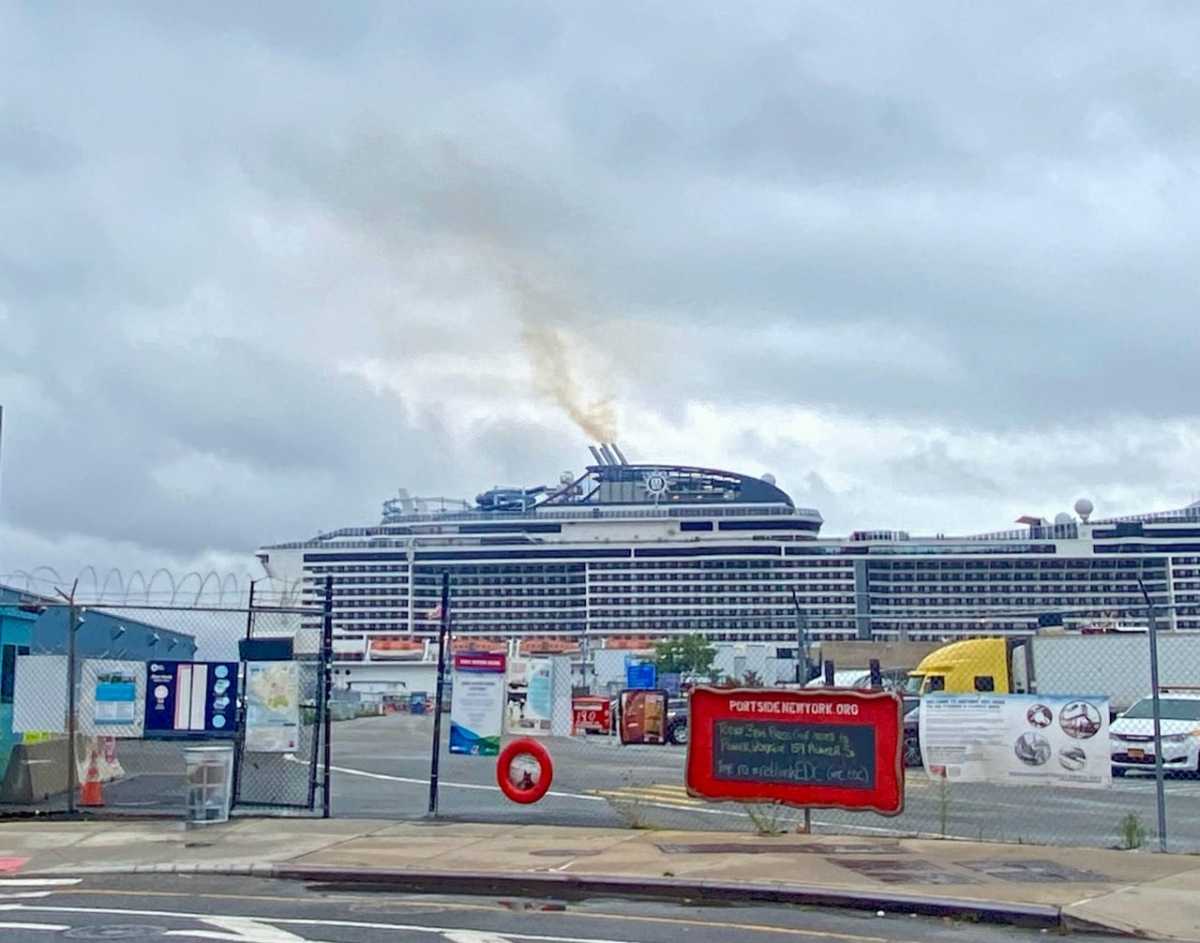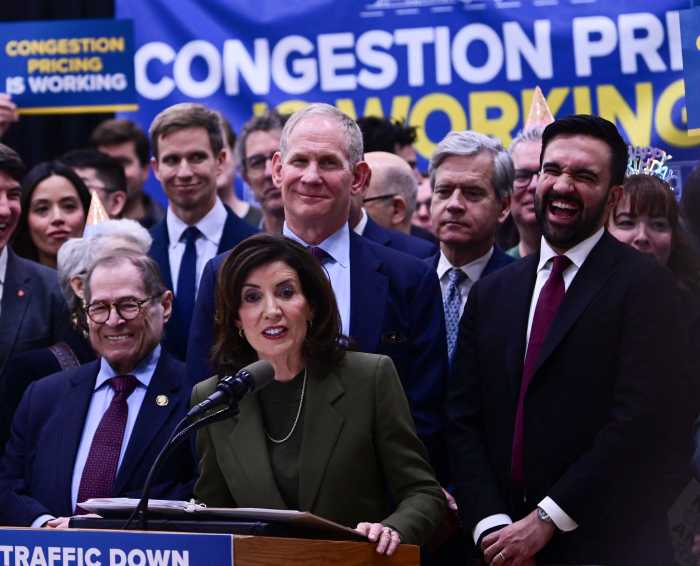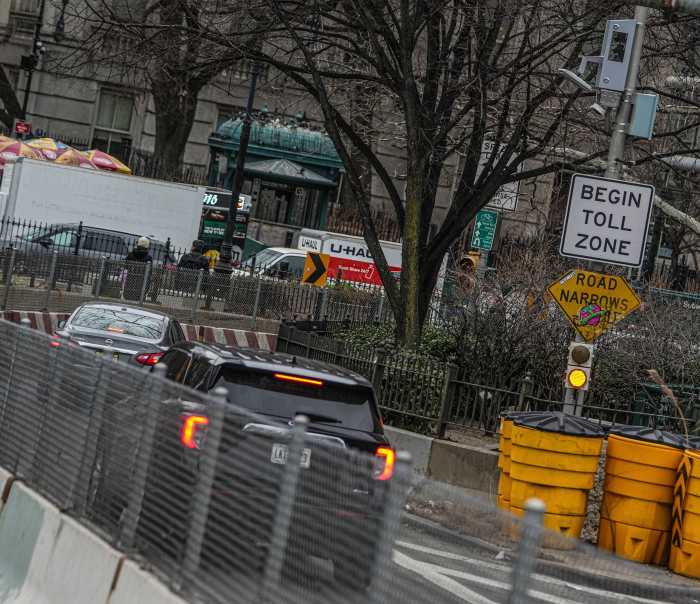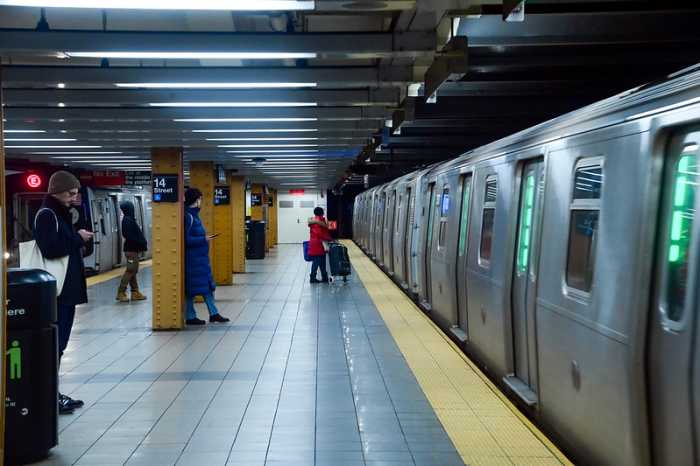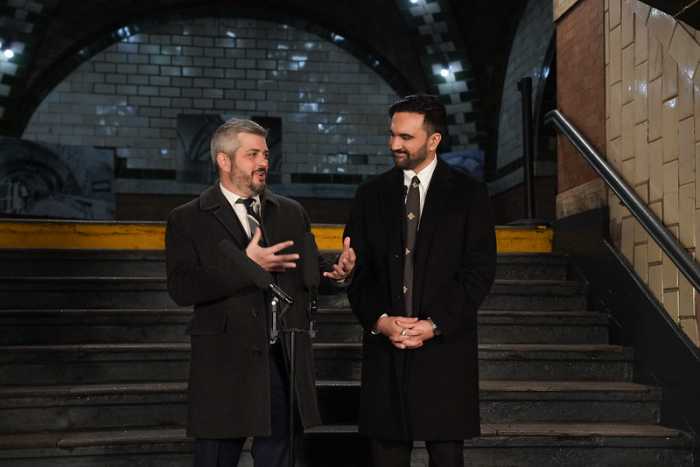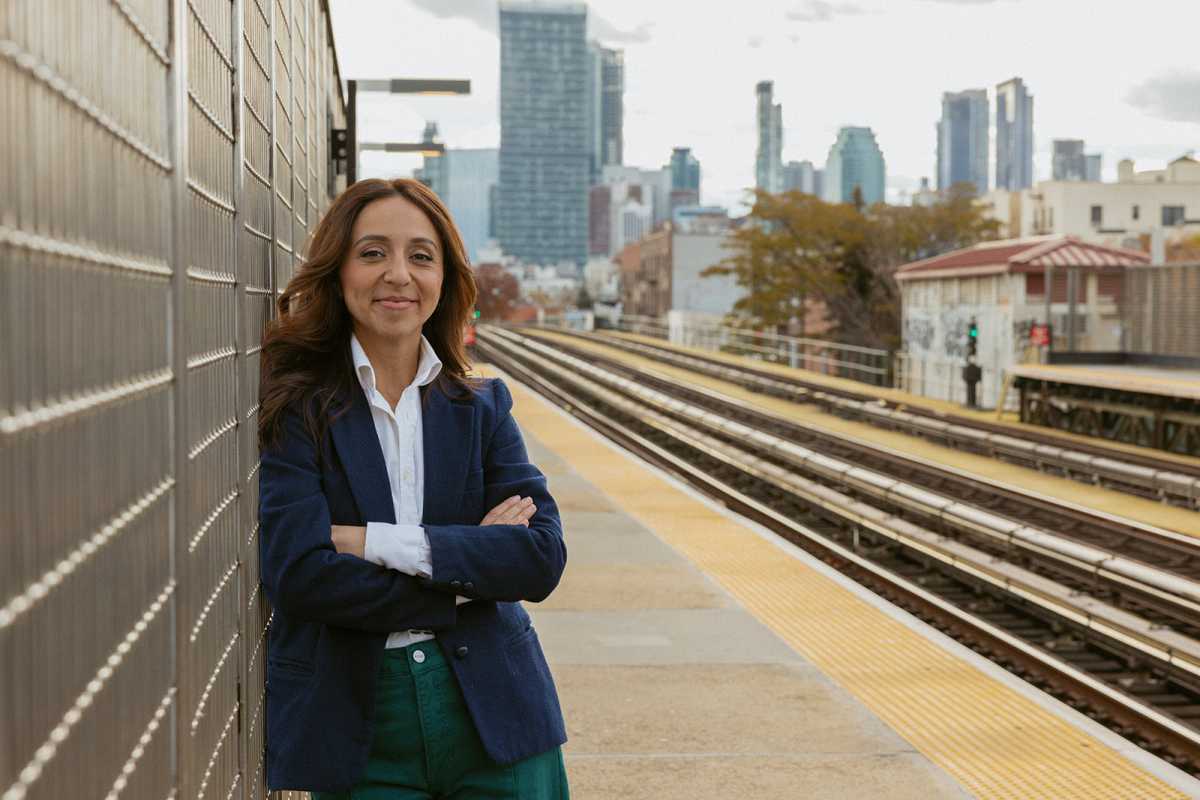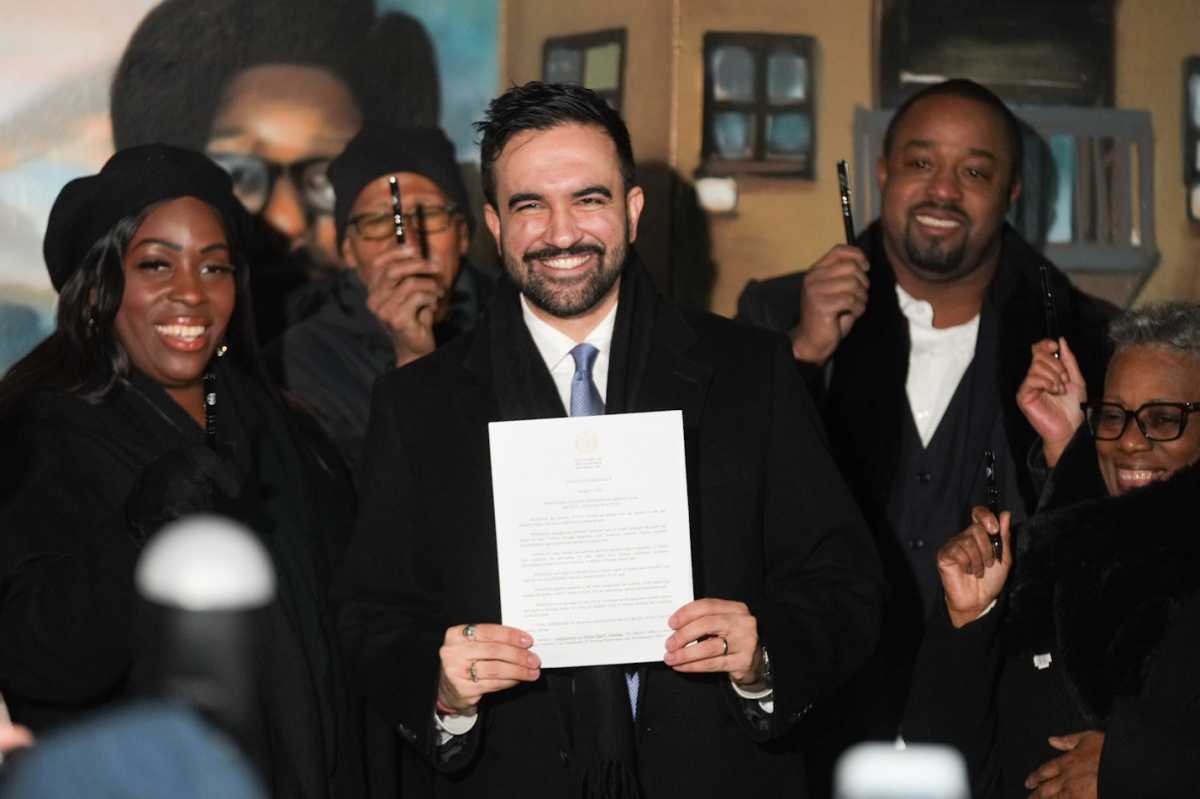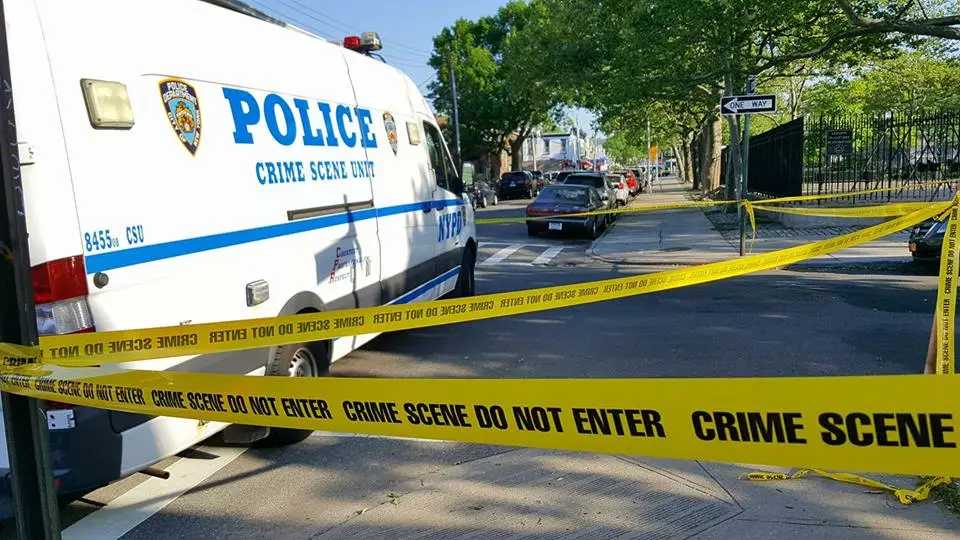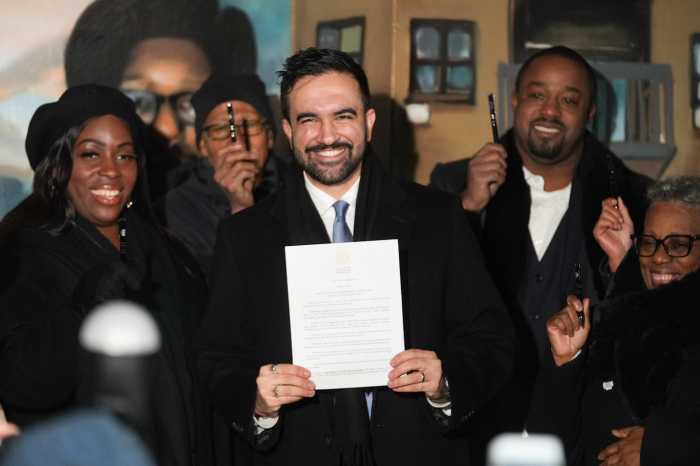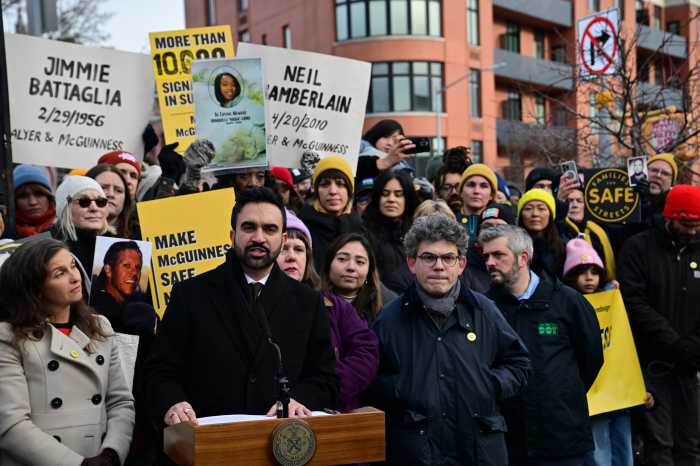The City Council is expected to pass a bill Thursday requiring cruise ships to connect to shore power instead of burning dirty diesel fuel at port in New York City — lest they be made to walk the plank out of the Big Apple, amNewYork Metro has exclusively learned.
The bill, Intro 4-A of 2024, would condition access to the city’s two cruise ports at Red Hook and Hell’s Kitchen to only those ships that connect to the city’s power grid to keep the lights on while at berth, instead of burning diesel fuel. Operators will also be required to create plans for mitigating traffic associated with cruise departures.
Brooklyn Democratic City Council Member Alexa Avilés confirmed to amNewYork Metro the bill’s impending passage at the Council’s March 7 stated meeting; she is one of the two prime sponsors of the bill whose district includes the Brooklyn Cruise Terminal, as well as a spokesperson for Speaker Adrienne Adams.
The move comes after years of organizing in the communities around the cruise terminals, particularly in Red Hook, where residents have long complained of cruise ships belching toxic fumes into the atmosphere despite that terminal already being equipped with clean power. The sponsors of the legislation, Erik Bottcher of Manhattan as well as Avilés, say just one cruise ship emits as many pollutants into the atmosphere as 34,000 big rig trucks.
“Our city should be setting standards for all kinds of things. Among them, if you want to come to New York in your ship, you must plug in,” Avilés said in an interview with amNewYork Metro. “There’s no Planet B. We have one planet, one shot.”
Brooklyn became the first port on the East Coast to be equipped with shore power back in 2016, but the system has been significantly underutilized, partially because it was specifically designed for the Cunard Line’s Queen Mary 2 and Princess Line ships.
Not in ship shape
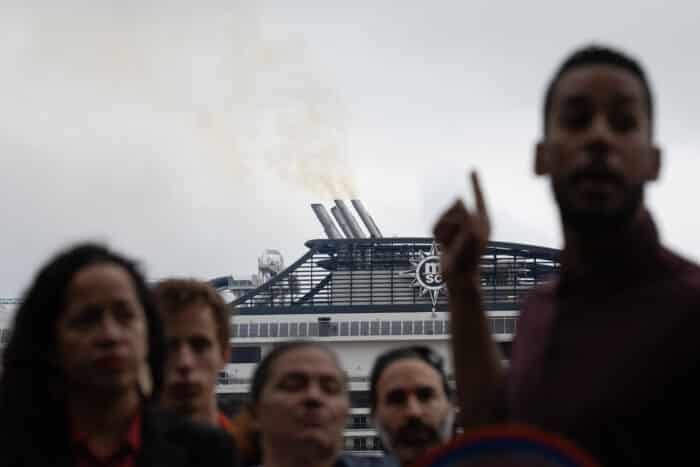
In 2022, Mayor Eric Adams announced a $100 million deal to bring the MSC Meraviglia, one of the largest ships in the world, to berth in Brooklyn year-round. The Meraviglia is over 1,000 feet long and 171,000 gross tons, has space for 5,500 passengers and 2,500 crew, and features 12 restaurants, 20 bars, a waterpark, and a Formula 1 simulator.
But what the Meraviglia lacks is a shore power connection calibrated for Brooklyn’s plugin, and so the Meraviglia powers itself by spewing fossil fuels into Red Hook’s air, which is also polluted by a concentration of last-mile trucking facilities.
The Economic Development Corporation, the quasi-public city agency tasked with overseeing ports, says by the end of this year it will have installed a “mobile jib,” the “first step” in a new cable positioning system that will ultimately enable the Meraviglia to connect to Brooklyn’s shore power. A spokesperson for MSC Cruises, Field Sutton, told amNewYork Metro that the company intends to connect the Meraviglia to shore power “as soon as the Brooklyn Cruise Terminal is equipped with the capabilities necessary to accommodate all ships.”
Sutton also noted that MSC ships connect to shore power across the world, and said the Meraviglia is equipped with scrubbers “that remove sulfur oxides from ship’s engine and boiler exhaust gases.”
Last year, EDC reached a deal with major cruise companies that gives them until 2035 to retrofit their existing fleets for shore power capability. That is largely in line with the cruise industry’s own self-set goals, which would have all new ships be shore power-capable by 2028 and existing ships be retrofitted by 2035.
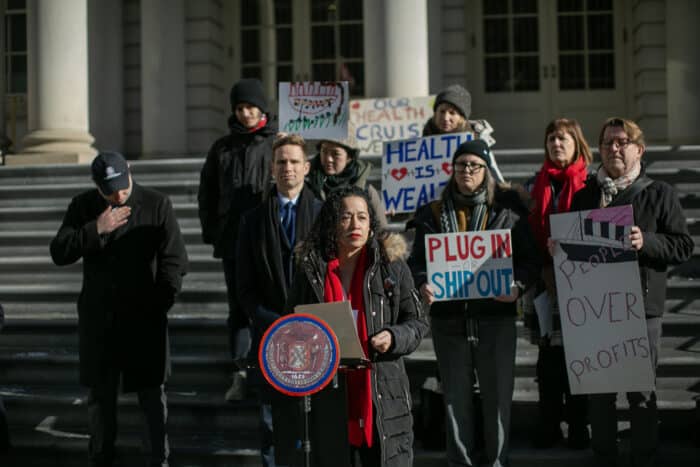
“2035 is not an acceptable standard, that is an industry set date based on I don’t know what,” said Avilés. “I’m not interested in appeasing an industry that is quite frankly making billions of dollars profit and where there is like no real local and tangible investment.”
Besides pollutants being emitted from the ship, like harmful particulate matter and sulfur oxide, cruises also draw a huge number of trucks to port to supply ships and cars as passengers drive to the berth. A study conducted last year by EDC and consulting firm WSP found that hundreds of additional vehicles enter Red Hook each day when the Meraviglia is at port in Brooklyn.
Residents of Red Hook say traffic problems have been particularly fraught since the arrival of the Meraviglia, causing buses to be rerouted, emergency vehicles to be stuck in gridlock, and cyclists and pedestrians to be put in dangerous situations.
Impacts of fumes
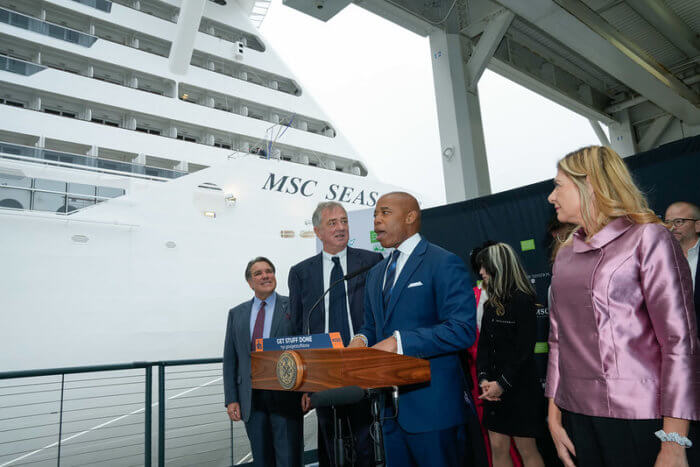
The pollutants spewed from the ships and the vehicles they draw have had a profound impact, community members say. Adam Armstrong, a longtime shore power advocate who long lived in Red Hook but recently left, partially due to the pollution, said kids growing up on his block were getting asthma and being hospitalized multiple times per week and that “cancer clusters” developed in his area; he suspects that is the result of ship emissions.
“We know these emissions harm human health and harm the climate,” Armstrong said. “To me, it’s just negligence on the part of the Economic Development Corporation.”
Both Council Districts 3 and 38, where the cruise terminals are located, have above-average levels of air pollution compared to the rest of the city, according to Spatial Equity NYC. Local resident Kiki Valentine suspects that her 9-year-old son Hart developed asthma and had childhood lead poisoning as a result of living across the street from the cruise terminal. Hart’s good friend from elementary school also has asthma, and their downstairs neighbor has cancer, Valentine noted.
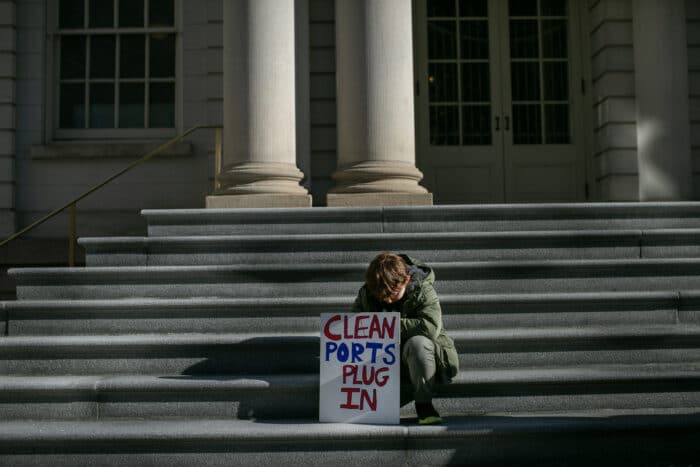
The bill is not a “silver bullet,” admits Avilés. For one, there are no fines or other penalties associated with failing to connect to shore power, and Avilés says this means the Council will need to exercise rigorous oversight of the cruise companies and the EDC.
After EDC’s initial snafu with shore power at Brooklyn, residents and advocates aren’t quite ready to trust that the agency — under an administration that has supported the cruise industry — will hold companies’ feet to the fire, but they say having the requirement in law is nonetheless a step in the right direction.
“The bill doesn’t answer everything but it’s a big step towards getting shore power more used,” said Carolina Salguero, executive director of waterfront advocacy group PortSide NY. “It sends a message that the EDC, their performance was so bad that a legislative corrective needed to be enacted.”
In a statement, EDC insisted it was already implementing many aspects of the law, a point reps had made to the City Council before and had been disputed by advocates, but said they will work with the lawmakers on fostering a sustainable cruise industry in the city.
“NYCEDC looks forward to continuing to work with Council Member Alexa Aviles, Council Member Erik Bottcher, and their constituents to ensure the equitable and sustainable future of the cruise and tourism industries in New York City,” said EDC spokesperson Jeff Holmes. “NYCEDC is already implementing new processes and procedures that reflect the requirements outlined in Intro. 0004, including ensuring more ships are capable of connecting to shore power while in port and continuing to develop and implement traffic mitigation plans to reduce congestion while ships are in port.”
He also noted that EDC, MSC, and other stakeholders had initiated traffic mitigation efforts aside from WSP’s study, including contracting crossing guards, adding lanes at the terminal to improve traffic flow, and beefing up ferry and charter bus service.
“We are committed to working with all stakeholders to ensure that local businesses are also benefitting from the growing tourism industry,” Holmes continued, “including the economic impact from the cruise industry.”
Other ports around the world are embracing shore power at a faster clip than New York, critics charge. Miami, which has the world’s second-largest cruise terminal, expects to have a large shore power apparatus by the end of this year. The port of Seattle has had shore power since 2004. In California, all cruise ships were required to plug into shore power at Golden State ports starting last year, and all ships, including cargo vessels, are required to use it by 2027.
Manhattan’s cruise terminal, which sees about 10 times the traffic as Brooklyn, is not shore power equipped at all. At a hearing last month, EDC officials said the agency is nearly done with a feasibility study on shore power at that port. Whether or not the terminal has the electrical infrastructure needed for a shore power apparatus, agency honchos said it would take many years and millions of dollars to retrofit the facility.
“I know we’ll all have to be vigilant,” said Armstrong. “This legislation is not a silver bullet but it’s a very important building block.”
This article was updated with the correct name of MSC spokesperson Field Sutton.



